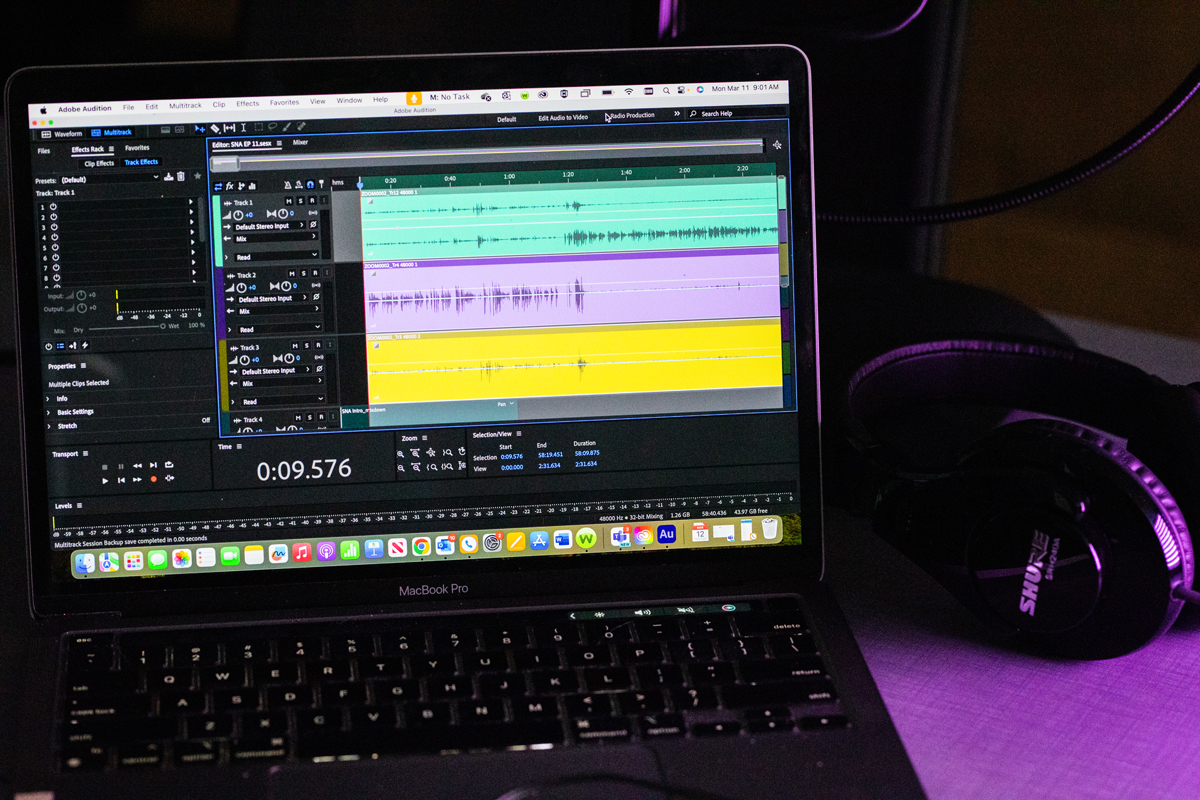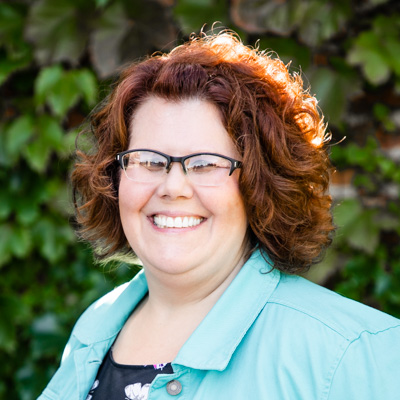
Starting Your Podcast Part 3: Editing and Distribution
April 11, 2024
Welcome back again! If you’re starting here, go back and check out Part One to learn about choosing a podcast format and Part Two to get into production. In Part Three, we’ll tackle the last two big tasks for your new podcast: Editing and Distribution.
Taking the step from concept to recording is a leap of faith, so if you’ve made it this far, take a minute to congratulate yourself.
All done? Ok, let’s get back to work.
Now that you have your podcast recorded, we need to get it ready for your audience to listen with some Editing.
1. Low Effort
If you get a clean recording (because you recorded in a quiet room with good mics and made sure you could hear everyone) editing can be minimal, but do plan to do some editing. You’re only human so expect false starts, long pauses, or to lose your train of thought sometimes. Your audience will forgive a little bit of that, but too many slip-ups in one episode can make it hard for them to keep listening.
If your podcast platform offers space for editing, cleaning things up can be as simple as uploading your file, removing any major issues, and publishing.
2. Medium Effort
You can also improve your sound quality with slightly more advanced editing. Pick the software of your choice and use it to clean up any noise in the room, even out the sound levels of your guests, tone down any harsh spikes, add intro and outro music, and then upload the finished show for distribution.
3. High Effort
I’ve never been a “High Effort” editor, but let’s imagine adding another layer of editing that would take your show from casual to darn-near “perfect”.
A patient Editor could comb through each track and eliminate every non-word (the ers, ums, and uhhhs) and pause to create a polished final product. Or you could decide to do multiple takes so they can weed out any gaffs and imperfections and assemble a highly produced final product.
(You may be thinking right now “Well, of course we want the best possible version. Why wouldn’t we choose this route?” If that’s the case, consider your format again. The “best possible version” of a casual conversation could be the one that sounds the most genuine, gaffs and all.)
Wow. Look how far we’ve come! You started from just an idea, and now you’ve got the show YOU were trying to make ready for the world – or at least someone other than you – to hear it. How do you make that happen?
Let's wrap up with some thoughts on Distribution.
1. Low Effort
If your podcast works best for an exclusive audience (like your employees and volunteers) or you’re just not ready to publish it widely quite yet, you can host the files on your own website, internal server, or a cloud server and share a link to that smaller group.
Chances are that you won’t have access to any analytics, so consider carefully if that that might be a hurdle for measuring the success of your show.
2. Medium Effort
Some podcast platforms will host your show at no or low cost and even distribute it for you to other popular podcast platforms. We already mentioned Anchor.FM, which is now Spotify for Podcasters ( and their Creation Tools), was our first platform. The automatic distribution across multiple podcast platforms, including Apple and Spotify, was a huge help when we first started out.
Our show is now hosted by Wistia, a service we used first for video hosting and distribution and then expanded to host our podcast.
This gives us the flexibility of both widespread distribution to a number of popular podcast services and to create and share a link to our own custom channel.
Our team creates both Awsomology, which is publicly available, and an internal mental health-focused podcast that’s just for our teammates. Having one platform that does both and gives us some basic analytics makes our jobs much easier.
3. High Effort
By now, you can tell that my personal experience with podcasting lives in that “Medium Effort” area, but it’s more accurate to say that we’re giving Medium Effort Plus for distribution.
It’s true that finding a podcasting platform that will distribute your show for you automatically and report back analytics is a massive timesaver, but that efficiency does come at a cost. A totally hands-off approach can hamper your ability to manage your audience’s experience on their favorite platform and solicit and respond to reviews or comments. And while the data from the most popular platforms is relatively uniform, a mismatch between what a specific platform measures, and what your distributing platform reports can mean you miss out on key insights.
For those reasons, we allow automatic distribution of our podcast but have taken the extra steps to “claim” our shows and periodically review them on the podcast apps our listeners use the most.
A step up from this hybrid management strategy could be manually uploading your show to the key platforms you’d like to be featured on. While it’s definitely more labor intensive, it will give you maximum access to manage and pull data from each platform and more control over where your show shows up and what ads, music, or other podcasts it might live alongside.
Hey friend, thank you for taking the time to read through to the end here. This is a good time (though maybe the very beginning would have been better) to say that this is all the information I’ve picked up over the last 6 years as a part-time podcaster, and your experience with some of the programs and hardware could be different.
I also realized, just as I was about to land this plane, that I never once mentioned using video as a podcasting tool. That’s my bad, and we did use video early on too.
According to a recent article on The Verge, 28% of podcast listeners are using YouTube, well outpacing even the most popular audio-only platforms.
For us, it meant much longer pre- and post-production, and when a shift in our workload made that unrealistic, we pivoted to audio-only to keep the show alive. Even with that latest data, there's a real chance I’d be hard to convince to shift back to video since I’m also chronically camera shy, but if you have the audience, time, and desire to use video, it could be the right strategy for you.
THERE! Now we’re really at the end. If you’d like to hear how we do podcasting, check out our podcast Awsomology here on our blog, or your favorite podcast platform.

About the Author: Suzanne Campbell is the Lead Creative & Brand Champion on the Exclamation Marketing team and the self-proclaimed evangelist for Brand Voice. She’s picked up a lot of smart ideas from a lot of amazing people in her nearly 25 years of experience, and you can frequently hear them on the Awsomology podcast.

